Energytek ® Energytek Corporation
 Williamson U.S.
Williamson U.S.
Williamson Advanced technologies and capabilities of the infrared pyrometers:
The world's only patented manufacturer - suitable models can be found in any industry
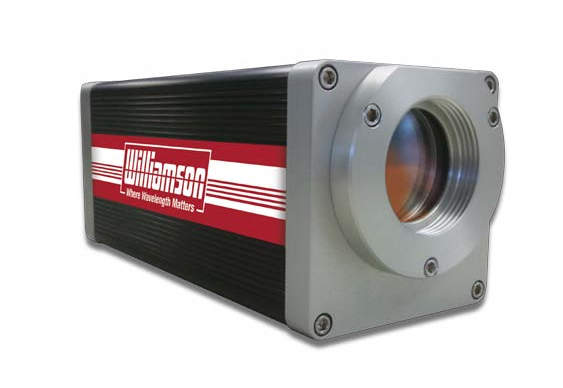
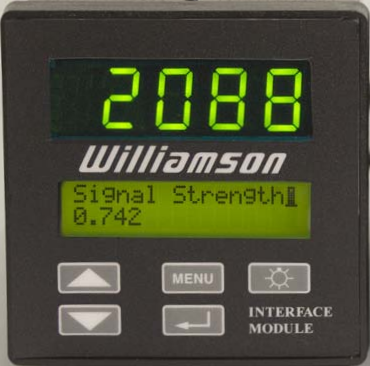
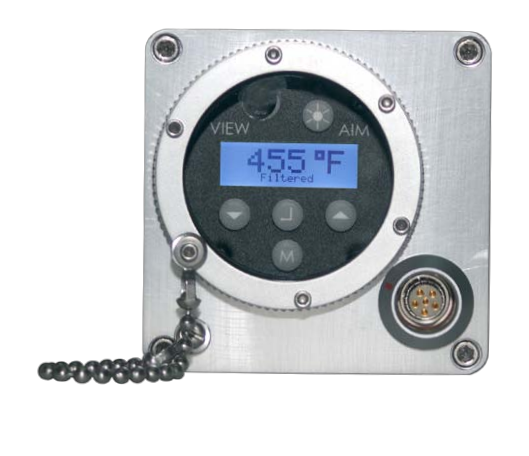
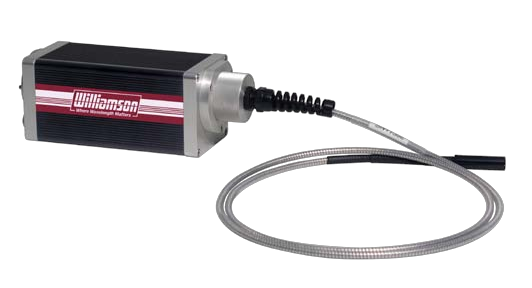
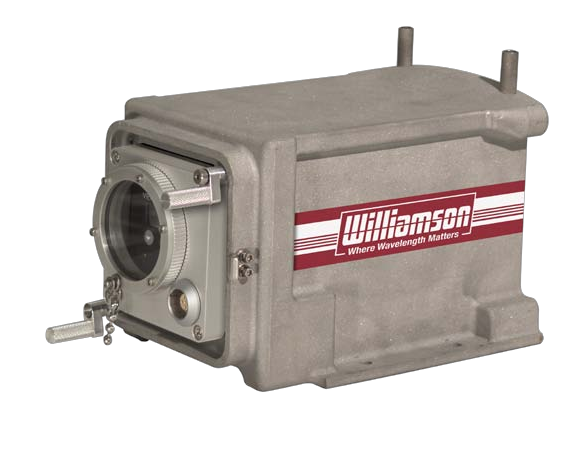
Advanced ESP filter: __ESP (Extrasensory Perciption)
PRO Series Dual/Multi-Wavelength Sensors Innovatively Designed ESP Filters for Traditional and Difficult Applications
Infrared tpyrometers use an optical system to collect infrared energy to measure the target area. This energy is used to calculate the target surface temperature. In many industrial and laboratory settings, there are often problems with applications that interfere with the amount of IR energy collected by the pyrometer, including: changes in emissivity, misalignment, interference with optical obstructions and stray reflected IR energy.
The PRO series of dual and multi-wavelength pyrometers offer ESP to improve and simplify the management of these application issues. The goal of ESP is to enable out-of-the-box "aim and read" capability for even the most demanding applications.
Unique ESP features include:
•System status information provides useful information for operational verification.
•Five measurement parameters enable the pyrometer to effectively describe a wide range of application conditions (see table below).Each measured parameter can be seen on the pyromometer's display, or sent elsewhere through programmable outputs and alarms.
•Pre-programmed, application-specific ESP modes automatically recognize and compensate for a wide range of application conditions.
•ESP parameters can be easily adjusted to suit customer application needs or fine-tune existing ESP modes.A text-based menu makes it easy to view and adjust system parameters. There is no need for manual or special training to translate obscure programming code if adjustments are needed.
All combined, these innovative features make the PRO series dual and multi-wavelength pyrometers superior to traditional non-contact temperature pyrometers and the easiest to use.
The ESP filtering function, in the presence of severe interference, can guarantee the validity of the measurement, which is not always possible to eliminate the interference source.
But with Williamson's unique ESP filter for signal strength and signal dilution, it has the potential to overcome persistent application interference.
PRO Series dual and multi-wavelength pyrometers continuously measure signal strength and signal dilution. Because each application is characterized by acceptable values for these parameters, these measuring pyrometers provide valuable information about application conditions.
By setting the signal strength and signal dilution ESP filters to the characteristic range of the application, the pyrometer can automatically identify valid and invalid application conditions and respond appropriately.
ESP filters can be pre-programmed for specific applications, and text-based menus are easily adjusted in the field for unique applications and specially designed troubleshooting procedures.
There are two possible responses to which the pyrometer could provide an invalid operating condition:
•The pyrometer can be "turned off" and a status message will be displayed indicating that the ESP filter is out of range.
•The advanced peak hold function can display and hold the last valid temperature measurement before invalid conditions occur.
The end result of the ESP filter is that this pyrometer will only display temperature values and be accurate and reliable.
As a result, ESP filters enable more reliable temperature monitoring to help improve process quality, control and productivity.
An example of using ESP filtering to ensure valid readings is the temperature measurement of molten iron streams. In this application, thick smoke, sparks and reflections often make measurements extremely difficult. Three graphs illustrate how advanced ESP filters can be used to identify changes in application conditions, allowing the pyrometer to reflect more accurate and reliable temperature measurements.
| Heavy Smoke: Heavy smoke can obstruct the sensor’s view of the measured target and cause a sensor without ESP to read in error. By monitoring the decrease in signal dilution, the sensor with ESP can recognize the presence of smoke and maintain an accurate measurement. | Sparklers: As molten iron cools, carbon comes out of suspension and ignites to create sparklers that cause a sensor without ESP to read too high. By monitoring the increase in signal dilution, the sensor with ESP can recognize the presence of the sparklers and maintain an accurate measurement. |
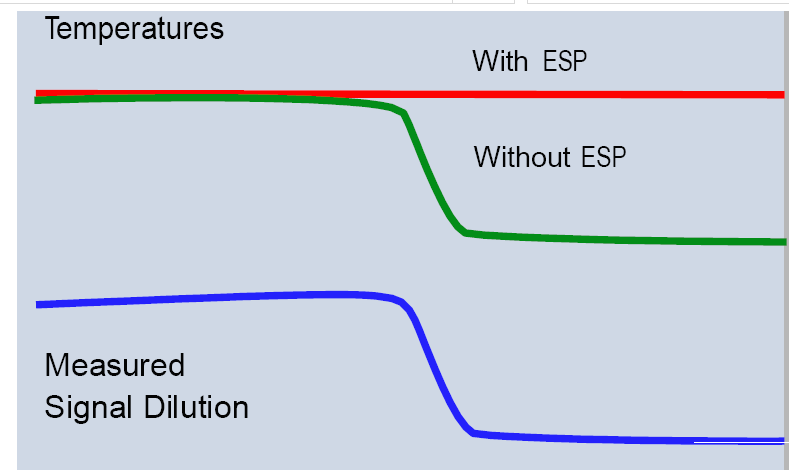 | 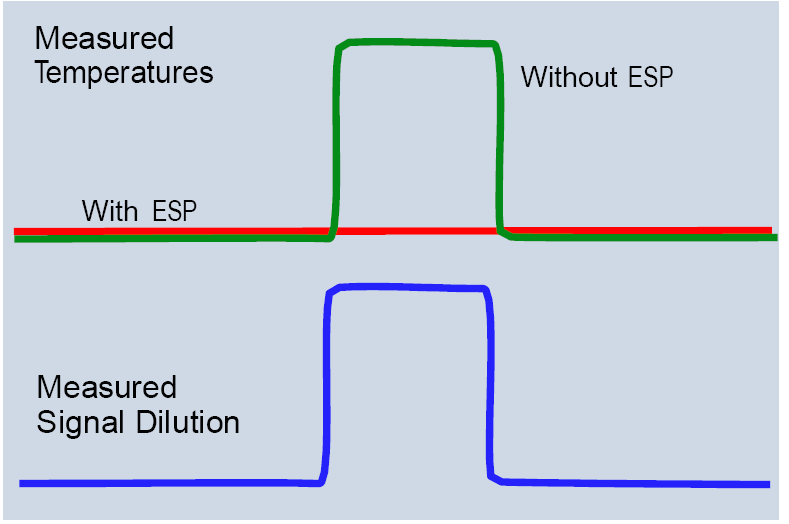 |
| Ladle Reflections: As a ladle is tipped, hot refractory walls are exposed, and a reflected image of these walls can cause a sensor without ESP to read in error. By monitoring the increase in signal strength, the sensor with ESP can ecognize the presence of reflections and maintain an accurate measurement. | Even with demanding application conditions ESP Filtering assures that the sensor will provide a valid reading … or none at all. |
 | 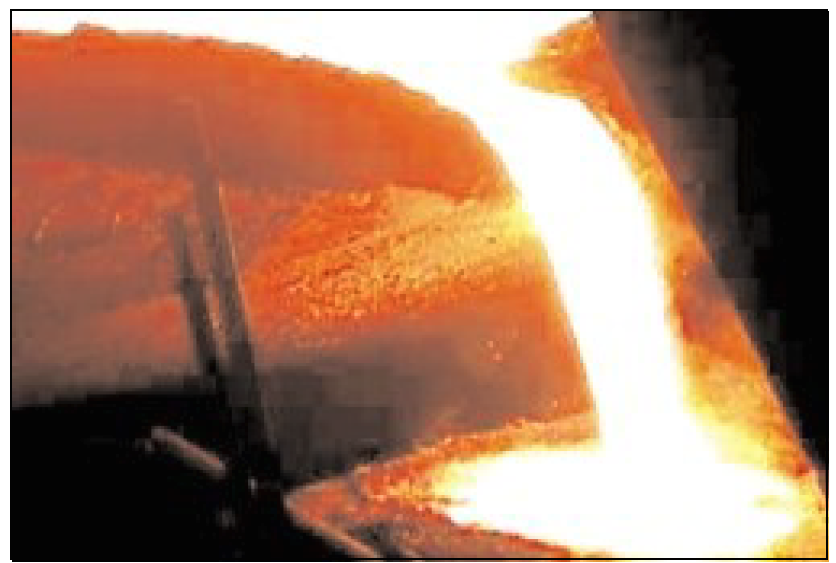 |
Advanced Dual Wavelength Design:

ESP guarantees the validity of the measurement, even under severe disturbances:
Infrared pyrometers use an optical system that collects infrared energy to measure the area of interest. This energy is used to calculate the target surface temperature. In many industrial and laboratory environments, there is often a problem with applications where a large amount of energy disturbance is collected by the pyrometer.
Problems with these applications include:
Intervening media, such as smoke, vapor, dust, spray, particulates, or dirty windows, or mechanical interference, cause light attenuation.Partial field of view and small or drifting targets caused by mechanical obstacles. The pyrometer has the ability to compensate for the signal dilution factor that interferes with these types of applications. The signal dilution factor, expressed as a ratio, represents the degree of signal dilution that a pyrometer can tolerate while still providing an accurate temperature reading.
For example, a signal dilution factor of 500:1 indicates that the pyroometer has more than 500 infrared signals than is required for a valid measurement. The higher the signal dilution factor, the more the pyrometer can tolerate interference from the application.
Typical maximum signal dilution:
Williamson PRO 81/91 - 110/210; DW/DWF MS/08/12, MW/MWF 10 Pyrometers: 1500:1
Williamson PRO 82/92 - 120/220; DW/DWF 24/28, MW/MWF 20/25 Pyrometers: 500:1
Williamson TC-11 Competitive Two-Color Pyrometers: 100:1
PRO Series dual-wavelength and multi-wavelength pyrometers offer extremely high signal dilution factors in harsh application conditions with several benefits.Improved accuracy and reduced maintenance, in harsh environments where the energy of the target is diluted by intervening interfering media.No need for precise alignment, when the object under test is particularly small or drifts. In order to provide a verification of the signal dilution factor of a 'live' pyrometer, the PRO series dual-wavelength and multi-wavelength pyrometers display the value of signal dilution as one of five measurement parameters.
Multi-wavelength design of advanced ESP filters:
Correct ESP algorithm for irregular changes in emissivity:
Successful temperature measurement of non-gray body materials is difficult because complex emissivity changes occur in surface oxidation, alloy composition, surface texture, temperature or crystal structure. Except under highly controlled conditions, conventional single-wavelength and dual-wavelength pyrometers are unable to compensate for these changes.Williamson's unique multi-wavelength infrared pyrometer uses an advanced ESP algorithm to solve this complex problem. ESP's algorithm is based on a computer-based empirical model that takes into account infrared energy, emissivity, measured wavelength, and properly compensates for irregularities in non-gray body materials.The figure below illustrates the accuracy of a multi-wavelength pyrometer in a typical non-gray body material, stainless steel. By using a stainless steel algorithm to compensate for changes in emissivity, the multi-wavelength pyrometer provides excellent results with out-of-the-box "aim and read" capability.
Williamson has developed a number of application-specific ESP filters to produce comparative results with applications previously considered difficult to measure.
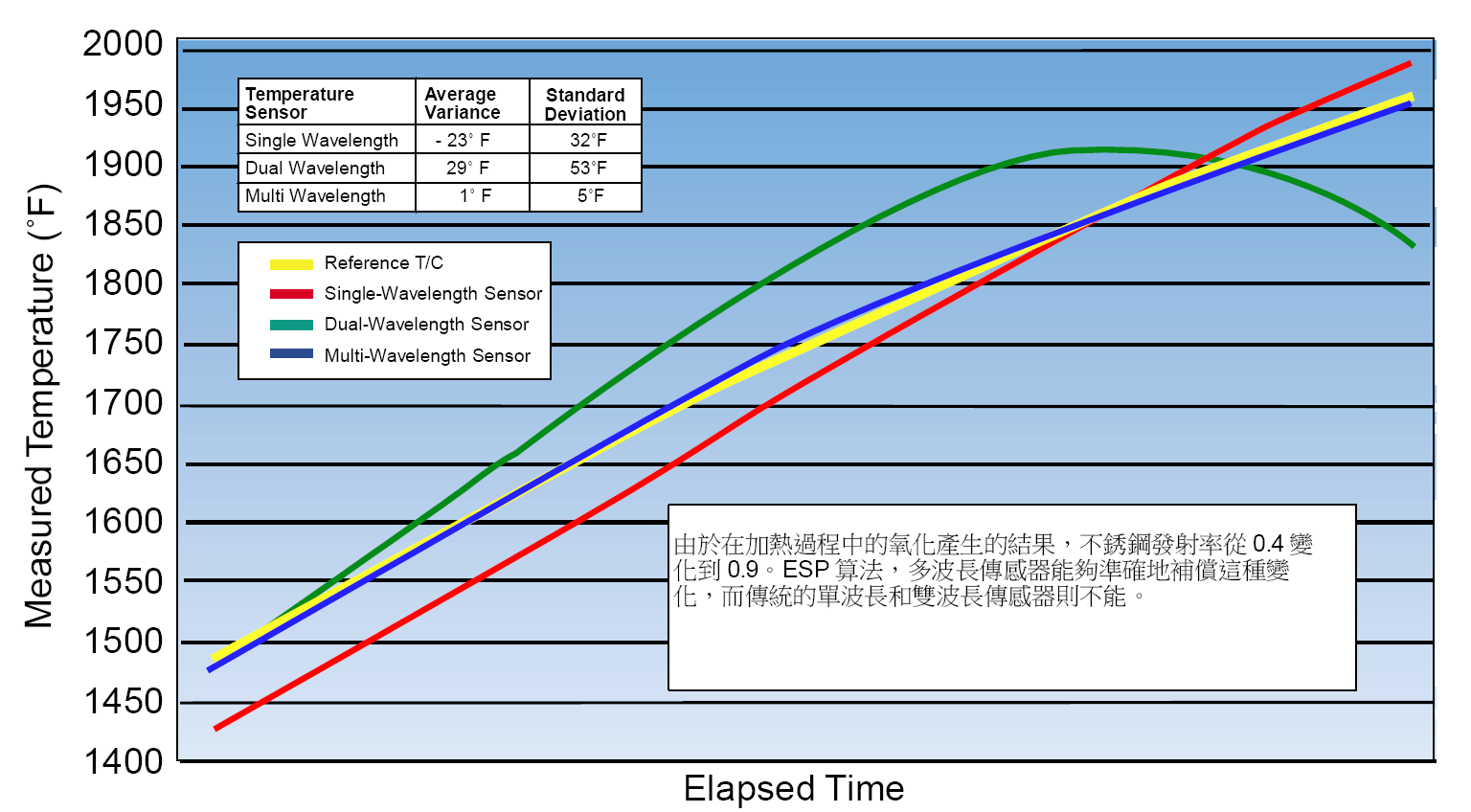
Examples of non-gray body materials:
aluminum,
chromium,
copper,
molybdenum,
Stainless steel,
titanium,
tin,
Tungsten,
zinc,
Galvanized steel,
Each multi-wavelength pyrometer can contain up to eight menu selections, a factory-programmed ESP algorithm, and a dual-wavelength/proportional mode of measurement. It is also very easy to build an advanced ESP model combined with the ESP filter of the ESP algorithm, so that even under harsh and unfavorable operating conditions, non-gray body materials can also be measured to obtain accurate values.
Optical fiber:

ArmorGuard (AG) System - Heavy-duty, flexible, stainless steel armored fiber with two layers of insulation and air purification for maximum protection against flame shock and high ambient temperature fiber optic cable ducts.
Stainless Steel Braided System (SSB) - Durable inner Teflon sleeving and general industrial facility protection, a flexible, lightweight fiber optic cable conduit for air purification.
Monofilament Fiber Cable (MN) - With PTFE jacket and PTFE jacket. They offer a smaller diameter 0.05in, 1.3m and non-conductive package. Ideal for applications with very tight spaces and a high potential for unwanted EMI.







